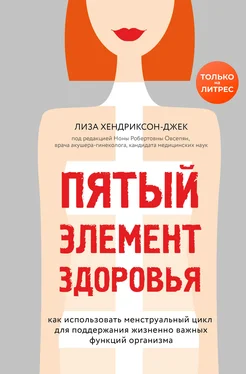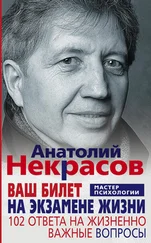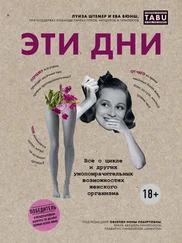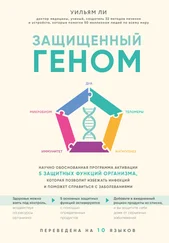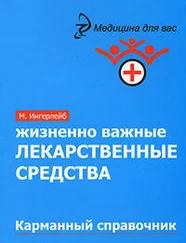3. Tunbridge, W.M.G., D.C. Evered, R. Hall, D. Appleton, M. Brewis, F. Clark, J. Grimley Evans, E. Young, T. Bird, and P.A. Smith. “The spectrum of thyroid disease in a community: the Whickham survey.” Clinical Endocrinology 7, no. 6 (1977): 481–493; Canaris, Gay J., Neil R. Manowitz, Gilbert Mayor, and E. Chester Ridgway. “The Colorado thyroid disease prevalence study.” Archives of Internal Medicine 160, no. 4 (2000): 526–534.
4. Garber, Jeffrey R., Rhoda H. Cobin, Hossein Gharib, James V. Hennessey, Irwin Klein, Jeffrey I. Mechanick, Rachel Pessah-Pollack, Peter A. Singer, and Kenneth A. Woeber for the American Association of Clinical Endocrinologists and American Thyroid Association Taskforce on Hypothyroidism in Adults. “Clinical practice guidelines for hypothyroidism in adults: cosponsored by the American Association of Clinical Endocrinologists and the American Thyroid Association.” Thyroid 22, no. 12 (2012): 1200–1235; Wartofsky, Leonard, and Richard A. Dickey. “The evidence for a narrower thyrotropin reference range is compelling.” The Journal of Clinical Endocrinology & Metabolism 90, no. 9 (2005): 5483–5488.
5. Negro, Roberto, and Alex Stagnaro-Green. “Diagnosis and management of subclinical hypothyroidism in pregnancy.” The BMJ 349 (2014): 1–10.
6. Joshi, J.V., S.D. Bhandarkar, M. Chadha, D. Balaiah, and R. Shah. “Menstrual irregularities and lactation failure may precede thyroid dysfunction or goitre.” Journal of Postgraduate Medicine 39, no. 3 (1993): 137–41.
7. Krassas, Gerasimos E. “Thyroid disease and female reproduction.” Fertility and Sterility 74, no. 6 (2000): 1063–1070.
8. Krassas, G.E., Kris Poppe, and Daniel Glinoer. “Thyroid function and human reproductive health.” Endocrine Reviews 31, no. 5 (2010): 702–755.
9. Krassas, Gerasimos E. “Thyroid disease and female reproduction.” Fertility and Sterility 74, no. 6 (2000): 1063–1070.
10. Jacobson, Melanie H., Penelope P. Howards, Lyndsey A. Darrow, Juliana W. Meadows, James S. Kesner, Jessica B. Spencer, Metrecia L. Terrell, and Michele Marcus. “Thyroid hormones and menstrual cycle function in a longitudinal cohort of premenopausal women.” Paediatric and Perinatal Epidemiology (2018): 1–10.
11. Hess, Sonja Y. “The impact of common micronutrient deficiencies on iodine and thyroid metabolism: the evidence from human studies.” Best Practice & Research: Clinical Endocrinology & Metabolism 24, no. 1 (2010): 117–132.
12. Peckham, Stephen, David Lowery, and Sarah Spencer. “Are fluoride levels in drinking water associated with hypothyroidism prevalence in England? A large observational study of GP practice data and fluoride levels in drinking water.” Journal of Epidemiol Community Health 69, no. 7 (2015): 619–624.
13. Pearce, Elizabeth N., and Lewis E. Braverman. “Environmental pollutants and the thyroid.” Best Practice & Research; Clinical Endocrinology & Metabolism 23, no. 6 (2009): 801–813; Kashiwagi, Keiko, Nobuaki Furuno, Shigeyuki Kitamura, Shigeru Ohta, Kazumi Sugihara, Kozo Utsumi, Hideki Hanada, Kikuyo Taniguchi, Ken-ichi Suzuki, and Akihiko Kashiwagi. “Disruption of thyroid hormone function by environmental pollutants.” Journal of Health Science 55, no. 2 (2009): 147–160.
14. Rice, Kevin M., Ernest M. Walker Jr., Miaozong Wu, Chris Gillette, and Eric R. Blough. “Environmental mercury and its toxic effects.” Journal of Preventive Medicine and Public Health 47, no. 2 (2014): 74–83.
15. Liontiris, Michael I., and Elias E. Mazokopakis. “A concise review of Hashimoto thyroiditis (HT) and the importance of iodine, selenium, vitamin D and gluten on the autoimmunity and dietary management of HT patients. Points that need more investigation.” Hellenic Journal of Nuclear Medicine 20, no. 1 (2017): 51–56.
16. Fröhlich, Eleonore, and Richard Wahl. “Thyroid autoimmunity: role of anti-thyroid antibodies in thyroid and extra– thyroidal diseases.” Frontiers in Immunology 8 (2017): 521: 1–16.
17. Paynter, O.E., G.J. Burin, R.B. Jaeger, and C.A. Gregorio. “Goitrogens and thyroid follicular cell neoplasia: evidence for a threshold process.” Regulatory Toxicology and Pharmacology 8, no. 1 (1988): 102–119.
18. Bianco, Antonio C., Domenico Salvatore, Balázs Gereben, Marla J. Berry, and P. Reed Larsen. “Biochemistry, cellular and molecular biology, and physiological roles of the iodothyronine selenodeiodinases.” Endocrine Reviews 23, no. 1 (2002): 59–60; Brownstein, David. (2008). Overcoming Thyroid Disorders. Arden, NC: Medical Alternatives Press.
19. Ingbar, S.H., and L.E. Braverman. “Active form of the thyroid hormone.” Annual Review of Medicine 26, no. 1 (1975): 443–449.
20. Danforth Jr., Elliot, and A.G. Burger. “The impact of nutrition on thyroid hormone physiology and action.” Annual Review of Nutrition 9, no. 1 (1989): 201–227.
21. Abdalla, Sherine M., and Antonio C. Bianco. “Defending plasma T3 is a biological priority.” Clinical Endocrinology 81, no. 5 (2014): 633–641; Pascual, Angel, and Ana Aranda. “Thyroid hormone receptors, cell growth and differentiation.” Biochimica et Biophysica Acta (BBA) – General Subjects 1830, no. 7 (2013): 3908–3916.
22. Bianco, Antonio C., Domenico Salvatore, Balázs Gereben, Marla J. Berry, and P. Reed Larsen. “Biochemistry, cellular and molecular biology, and physiological roles of the iodothyronine selenodeiodinases.” Endocrine Reviews 23, no. 1 (2002): 38–89; Abdalla, Sherine M., and Antonio C. Bianco. “Defending plasma T3 is a biological priority.” Clinical Endocrinology 81, no. 5 (2014): 633–641.
23. Garber, Jeffrey R., Rhoda H. Cobin, Hossein Gharib, James V. Hennessey, Irwin Klein, Jeffrey I. Mechanick, Rachel Pessah-Pollack, Peter A. Singer, and Kenneth A. Woeber for the American Association of Clinical Endocrinologists and American Thyroid Association Taskforce on Hypothyroidism in Adults. “Clinical practice guidelines for hypothyroidism in adults: cosponsored by the American Association of Clinical Endocrinologists and the American Thyroid Association.” Thyroid 22, no. 12 (2012): 1200–1235.
24. Hoang, Thanh D., Cara H. Olsen, Vinh Q. Mai, Patrick W. Clyde, and Mohamed K.M. Shakir. “Desiccated thyroid extract compared with levothyroxine in the treatment of hypothyroidism: a randomized, double-blind, crossover study.” The Journal of Clinical Endocrinology & Metabolism 98, no. 5 (2013): 1982–1990; Friedman, Michael, Jorge R. Miranda– Massari, and Michael J. González. “Supraphysiological cyclic dosing of sustained release T3 in order to reset low basal body temperature.” Puerto Rico Health Sciences Journal 25, no. 1 (2006): 23–29; Wilson, E. Denis. “Reversing hypometabolic symptoms by normalizing low body temperatures with sustained-release T3 in patients with euthyroid TSH levels.” Journal of Restorative Medicine 1, no. 1 (2012): 64–74.
25. McCook, Judy G., Beth A. Bailey, Stacey L. Williams, Sheeba Anand, and Nancy E. Reame. “Differential contributions of polycystic ovary syndrome (PCOS) manifestations to psychological symptoms.” The Journal of Behavioral Health Services & Research 42, no. 3 (2015): 383–394; Padmanabhan, Vasantha. “Polycystic ovary syndrome – ‘a riddle wrapped in a mystery inside an enigma.’” The Journal of Clinical Endocrinology & Metabolism 94, no. 6 (2009): 1883–1885.
26. Sirmans, Susan M., and Kristen A. Pate. “Epidemiology, diagnosis, and management of polycystic ovary syndrome.” Clinical Epidemiology 6 (2014): 1–13.
27. Chang, J., R. Azziz, R. Legro, D. Dewailly, S. Franks, R. Tarlatzis, B. Fauser et al. “Revised 2003 consensus on diagnostic criteria and long-term health risks related to polycystic ovary syndrome.” Fertility and Sterility 81, no. 1 (2004): 19–25.
28. Azziz, Ricardo, Enrico Carmina, Didier Dewailly, Evanthia Diamanti-Kandarakis, Hector F. Escobar-Morreale, Walter Futterweit, Onno E. Janssen et al. “Criteria for defining polycystic ovary syndrome as a predominantly hyperandrogenic syndrome: an androgen excess society guideline.” The Journal of Clinical Endocrinology & Metabolism 91, no. 11 (2006): 4237–4245.
Читать дальше
Конец ознакомительного отрывка
Купить книгу
